
Worms can live in the human body for a long time without showing any signs of its presence. The main symptoms of parasitic infections appear much later, while they often resemble the symptoms of other diseases. One can find the cause of their disease for a long time and be treated for a completely different disease, even if the solution to the problem is in a worm infection.
Usually, parasites are suspected at a later stage, when treatment for other diseases does not help. During this time, the worms in the body reach maturity and become more difficult to remove. It is important to be able to recognize symptoms as soon as they appear, and immediately conduct a diagnosis to find out whether a parasitic infection should be blamed for frequent allergic rashes and other unpleasant illnesses.
What types of worms can a person have?
Worms are a common name for some parasites. There are about a hundred of them in total, of which a small group of representatives are most commonly distinguished, which must be mentioned separately.
cream worms
Pinworms are the most common type of helminthic attack that affects both adults and children. Their presence is the easiest to determine. This type of worm lays eggs on the skin between the backs. Therefore, one scrape is often sufficient to determine the presence of pinworms.
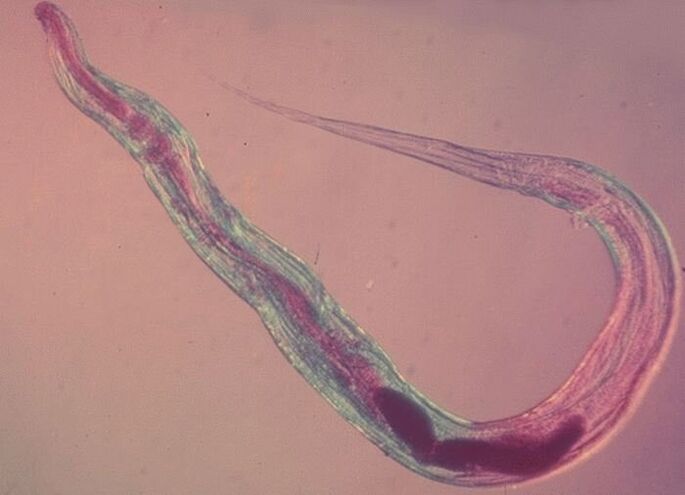
Bracelet worm
The "target" of ascaris is the respiratory tract. With ascariasis, a lot of sputum is released during coughing. If you take it for analysis, you can find traces of parasitic damage in it. An increase in body temperature is also possible.
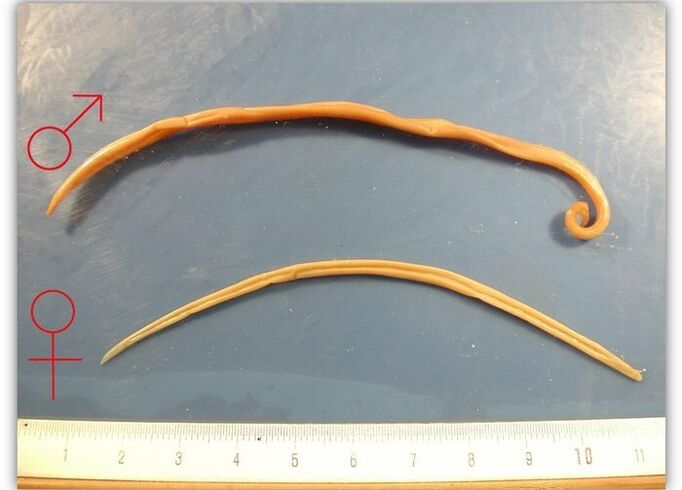
Trichinella
This parasite is the hardest to detect - it attaches to the intestinal wall and does not come out like a pin worm. Trichinosis has the highest mortality rate among all types of helminthic lesions - this is a disease that is difficult to treat. With lymph flow, Trichinella capsules can spread throughout the body.
The symptomatology of this lesion is more like typhoid fever.
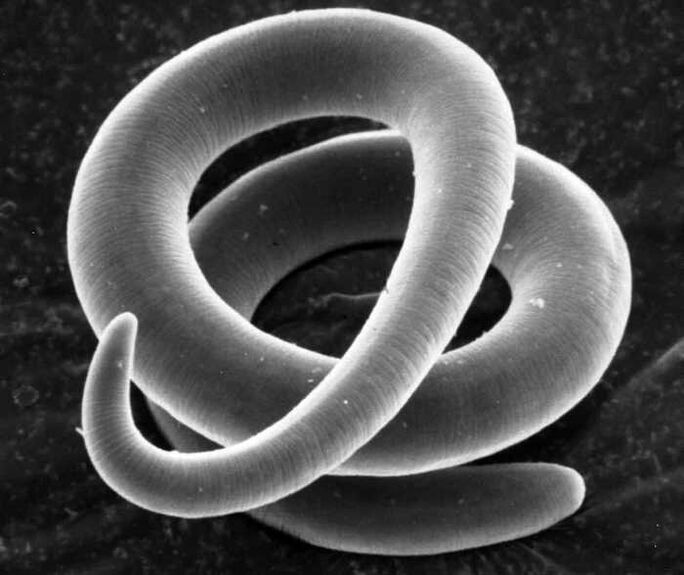
Trematod
Trematodes are flatworms that affect the liver, lungs, and blood. Infections usually occur while in contaminated water or eating undercooked meat.
There are other types of helminthic lesions, but they are not very dangerous or widespread. The main symptoms and treatment of all helminthic invasions are similar.
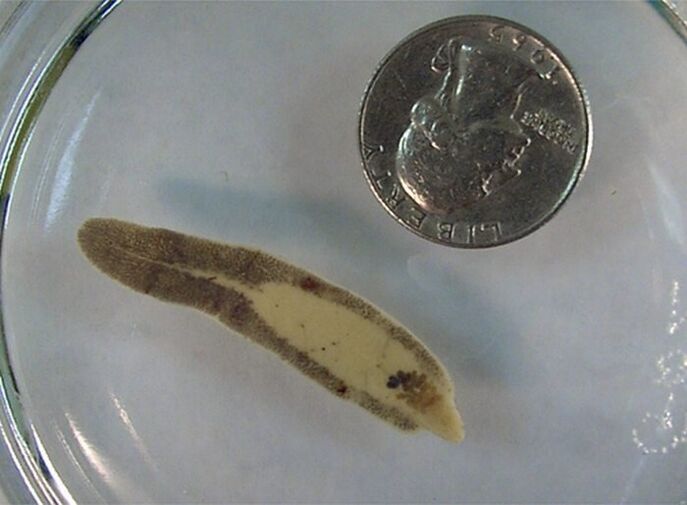
symptoms
The symptoms of helminthic lesions are varied. If most of them are present, it is reasonable to think about the possibility of parasitic invasion and diagnose.
- Flatulence, increased gas production, any other problems with the work of the large intestine.
- Frequent constipation or diarrhea. Depending on the stage of development of the parasite. Constipation occurs when a worm specimen becomes large and obstructs the intestinal tract with clots. Diarrhea indicates that older individuals interfere with bile secretion.
- Allergic reactions. Especially noticeable if the person is not allergic. Allergies can manifest in different forms - rash, eczema, the appearance of boils and papillomas.
- cough. Often dry, with no other flu symptoms. Cough suppressants and antibiotics do not solve the problem.
- Inflammatory diseases of the respiratory system. Worms can migrate through the body and reach the respiratory tract. This can trigger bronchitis, pneumonia, asthma.
- Itching in the anal area. Associated with the release of parasites to lay eggs. Appears mainly at night.
- Joint and muscle pain. They also appear due to the movement of parasites through the body.
- Biting teeth - bruxism. It is associated with an increase in the activity of the nervous system during parasitic infections. Appears during sleep.
- Chronic fatigue and conditions resembling depression. Worm waste actually poisons the body, leading to a deterioration in a person’s overall well-being.
- All manifestations of decreased immunity, frequent colds. It can be difficult to heal quickly.
If most of these symptoms are observed, the chances of worms are high. It is best to run a series of diagnostic tests immediately to confirm or refute this guess.
Important! Any of these symptoms should be referred to a specialist immediately. These signs can speak not only of helminthic lesions, but also other serious diseases.
Diagnostics
When worms are affected, a diagnosis cannot be made solely by the presence of symptoms. Some research needs to be done. Some of them give results that are almost 100% accurate.
- Various microscopic examination of feces and abrasion. These methods are the cheapest and most common, but they do not give 100%reliable results. It is possible to identify worms using this analysis only at the time of spawning, otherwise their presence will not be visible.
- ELISA - enzyme -linked immunosorbent assay. This method gives very accurate results, helping to determine the stage of development of the worm and its type. The only drawback of this analysis is its relatively high performance cost.
- Hemoscanning. This method can help refute or confirm the presence of worms in the body. With these blood tests, the effects of their vital activity and intoxication will be noticeable. The essence of this method is in the study of "living" blood taken earlier.
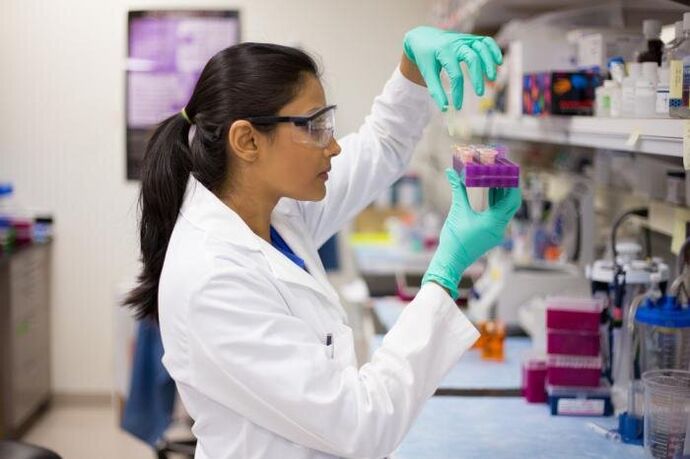
Important! It is usually advisable to go through several studies to confirm the results.
Which doctor is treating?
With a suspicion of helminthic invasion, it is better to contact a regular therapist and explain the situation to him. If tests to determine the presence of parasites have been conducted independently, they should be brought with you.
The therapist will refer you to a doctor who is more appropriate in a particular situation. If the worms are concentrated in the gastrointestinal tract, the specialist will issue a referral to a gastroenterologist. This happens in most cases, because most of the parasites live in the gut.

In some cases, consultation with a parasite specialist or parasitic disease specialist is required. But such narrow-profile doctors are far from anywhere, therefore, situations that do not go beyond the scope of a normal infection are entirely subject to the treating physician.
Home therapy
Immediately after the detection of the disease, treatment should be started. Most anthelmintic medications have many side effects, so it is recommended to take them under the supervision of your doctor.
Medications are different, depending on the type of worm infecting the body. In general, all drugs can be divided into several groups.
- Remedies for nematodes, including cream worms and ringworm.
- Remedies for cestodes - tapeworms, which include bovine tapeworms, small tapeworms, echinococcus.
- Remedy for trematodes, flatworms.
Important! Keep in mind that anthelmintic drugs are very toxic, they should be taken with caution.
Taking medication for prophylaxis
Since the intake of antihelminthic drugs has a large number of negative effects, it is not recommended to take them alone, for preventive purposes, if there is no increased risk of infection. Infections can happen any day: if you take the pill today, you can get sick tomorrow.
There is a small list of instructions for taking prophylactic drugs against worms:
- The appearance of worms in family members or people living in the same apartment. A person can infect the rest, therefore, if helminths are found in one of the family members, others are recommended to take prophylactic antihelminthic medications.
- If a child goes to kindergarten, then he, his parents, brother or sister are also advised to take antihelminthic drugs for prevention. It is believed that in closed children’s collectives there is an increased danger of parasite spread.
- Pets. If there are cats or dogs in the house, especially if they are often on the street, owners are advised to prophylax with antiparasitic medications.
- In contact with the ground, work with it. Especially for summer residents and wildlife lovers.
- Continuous journey to exotic countries. There is a high probability of carrying rare parasites from southern countries, so treatment will be complicated by the inability to determine its type quickly.
- Wildlife hobbies. This includes hiking, fishing, hunting.
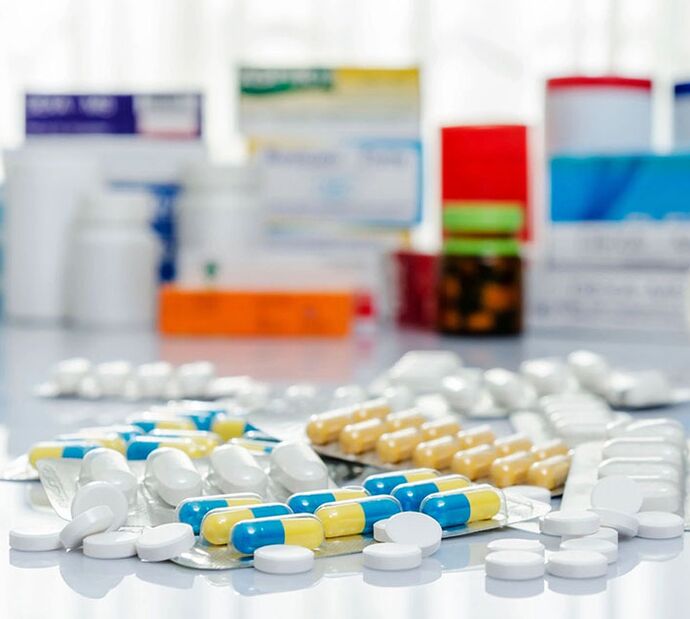
Only in this case the prophylactic administration of antihelminthic drugs is allowed and beneficial.
Treatment with folk remedies
Often, folk antiparasitic drugs come to the aid of pills for worms. You have to be careful with them - some of them are dangerous or can be harmful if misused.
Intestinal cleansing
Sometimes bowel cleansing with an enema is recommended after taking antihelminthics to completely remove dead parasites. The rationality of this method is questionable, but a regular enema with water is harmless - it can be done for your own peace of mind.
Some people recommend doing an enema with baking soda or salt - this method is more controversial. Soda and salt can burn mucous membranes and water balance imbalance, so you should not use them. In addition, most parasites live in different parts of the intestine. This method should be postponed as a last resort.

Garlic treatment
It is known that worms are afraid of sharp and burning food. Therefore, during treatment, you can add more garlic into the diet as a seasoning. You can also eat some cloves in the morning with a glass of milk. Then you need to empty your stomach and have breakfast. You can do it without milk - only this product simplifies the intake of garlic.
The introduction of tampons soaked in garlic juice into the anus is not recommended. May cause allergies and burns.
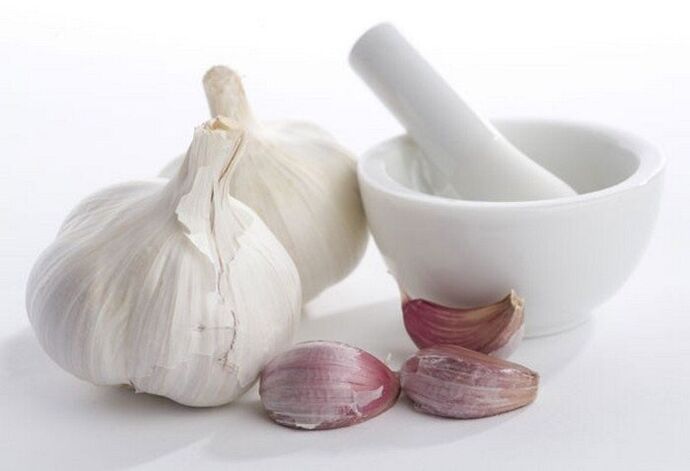
Pumpkin seeds
Pumpkin seeds are another effective folk remedy for the treatment and prevention of parasitic diseases. There are several methods to take it to combat worms.
On an empty stomach every morning you should eat a few tablespoons of pumpkin seeds. Then you have to wait about an hour and empty the bowel. If this is not possible, you will need to take a laxative. Then you can have breakfast.

For the second method, you need to mix one glass of ground roasted pumpkin seeds with a glass of honey and one tablespoon of baking soda. Put this mixture for about ten days in a dark place. Use only glassware. The finished mixture should be eaten in one tablespoon every morning, before meals.
Important! If you are allergic to folk remedies, they should be abandoned.
Prophylaxis
The main prevention of parasitic diseases is to keep the body and house clean. After using the toilet, come from the street - you need to wash your hands thoroughly with soap and water. You cannot share towels, toothbrushes, combs with others, even if they are family members.
Meat and fish should be rinsed before cooking and cooked thoroughly. Wash fruits and vegetables thoroughly, it is better to pour boiling water over them before use.

It is not worth taking antihelminthic drugs for prevention, but you can periodically rely more on spicy foods, garlic. For the same purpose, pumpkin seeds can be included in the diet.
Knowing about all the possible symptoms and manifestations of parasitic diseases, they can be detected at an early stage, after which they can heal quickly and painlessly.






































